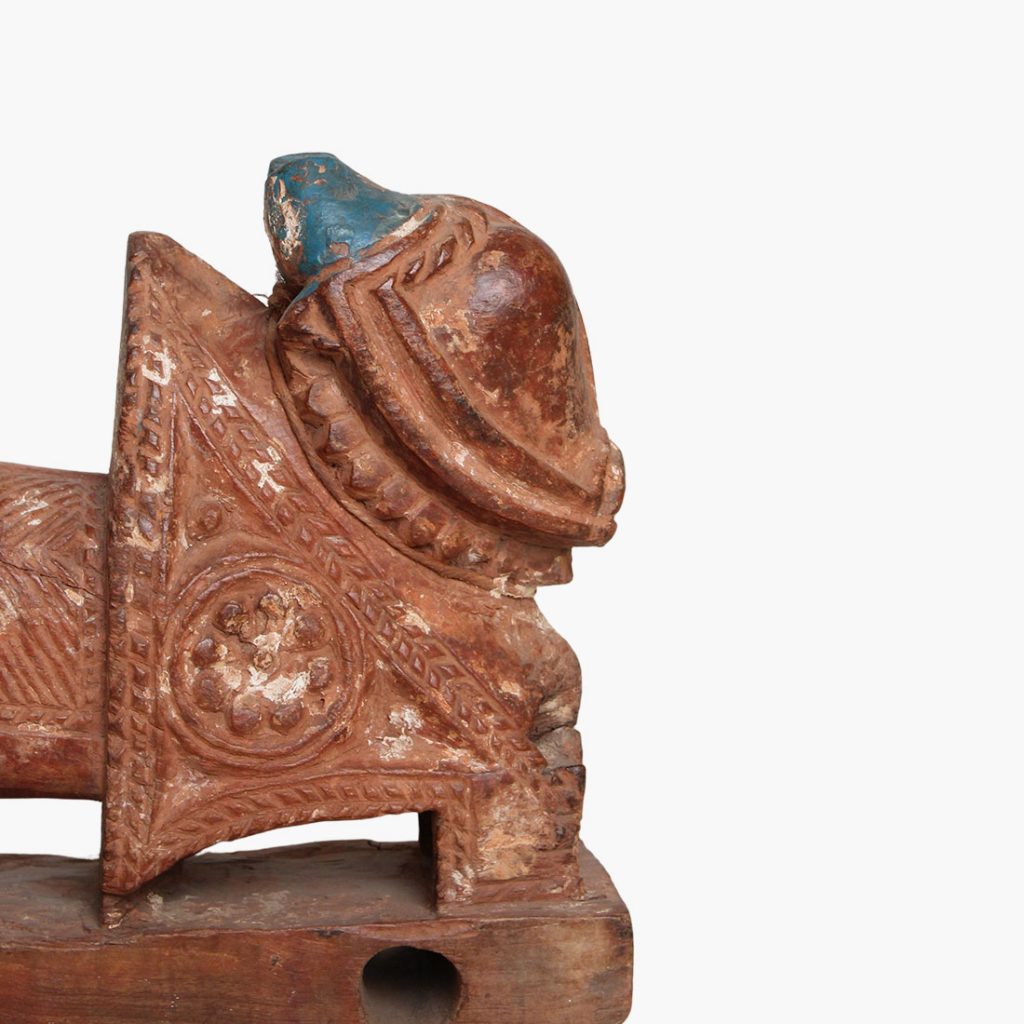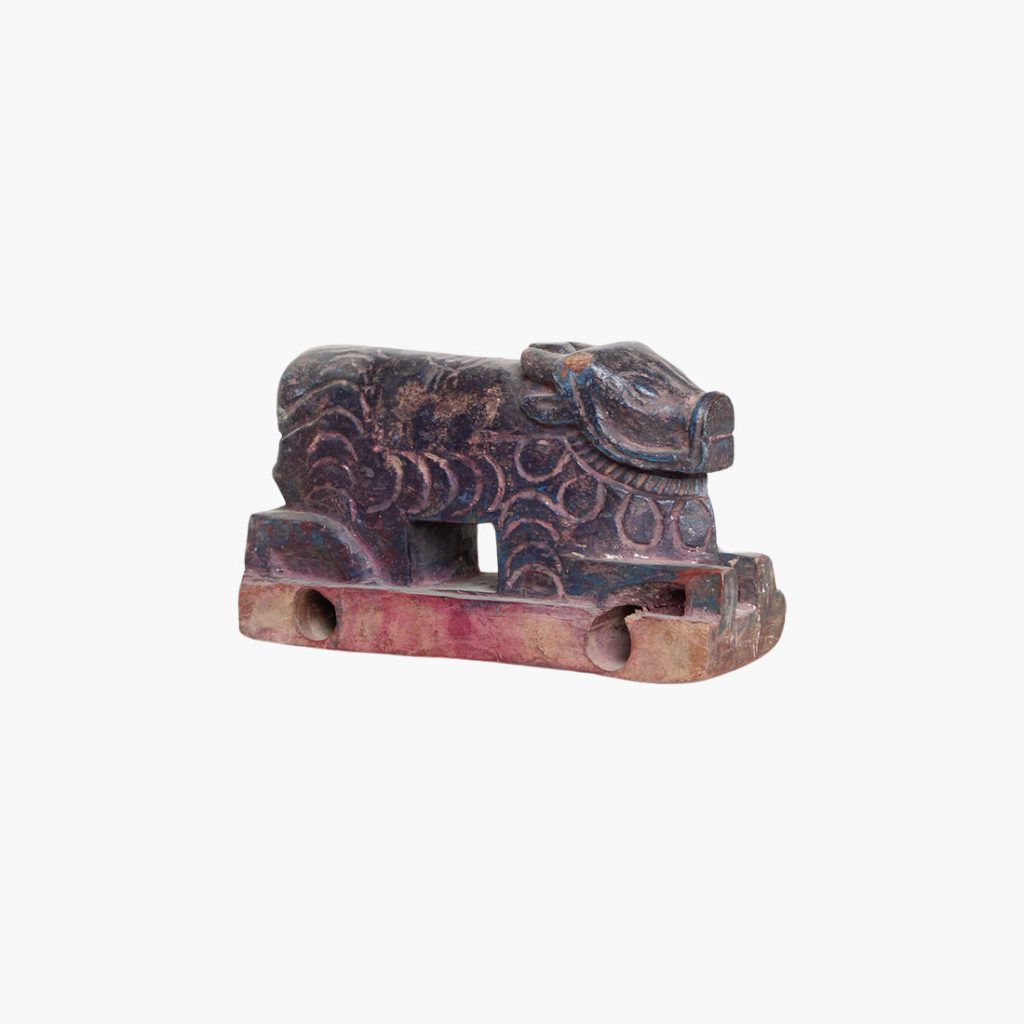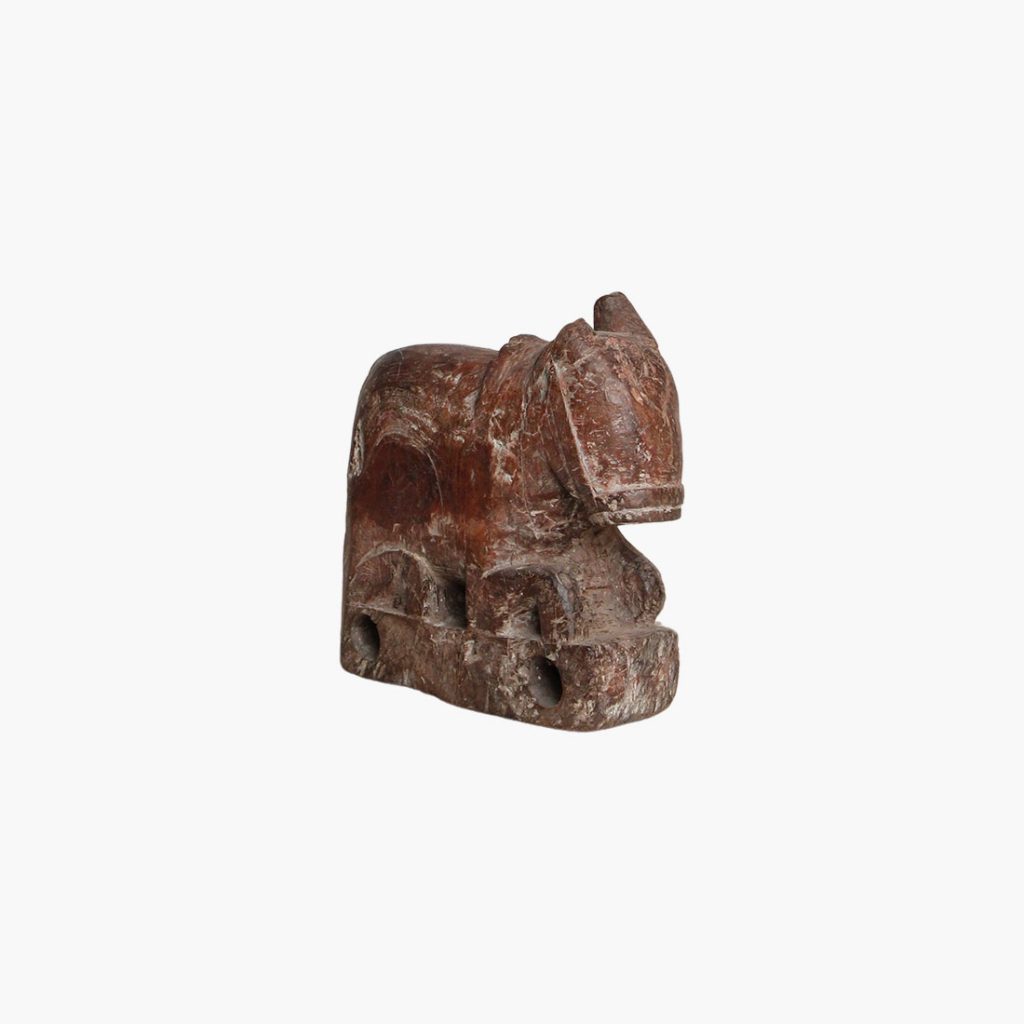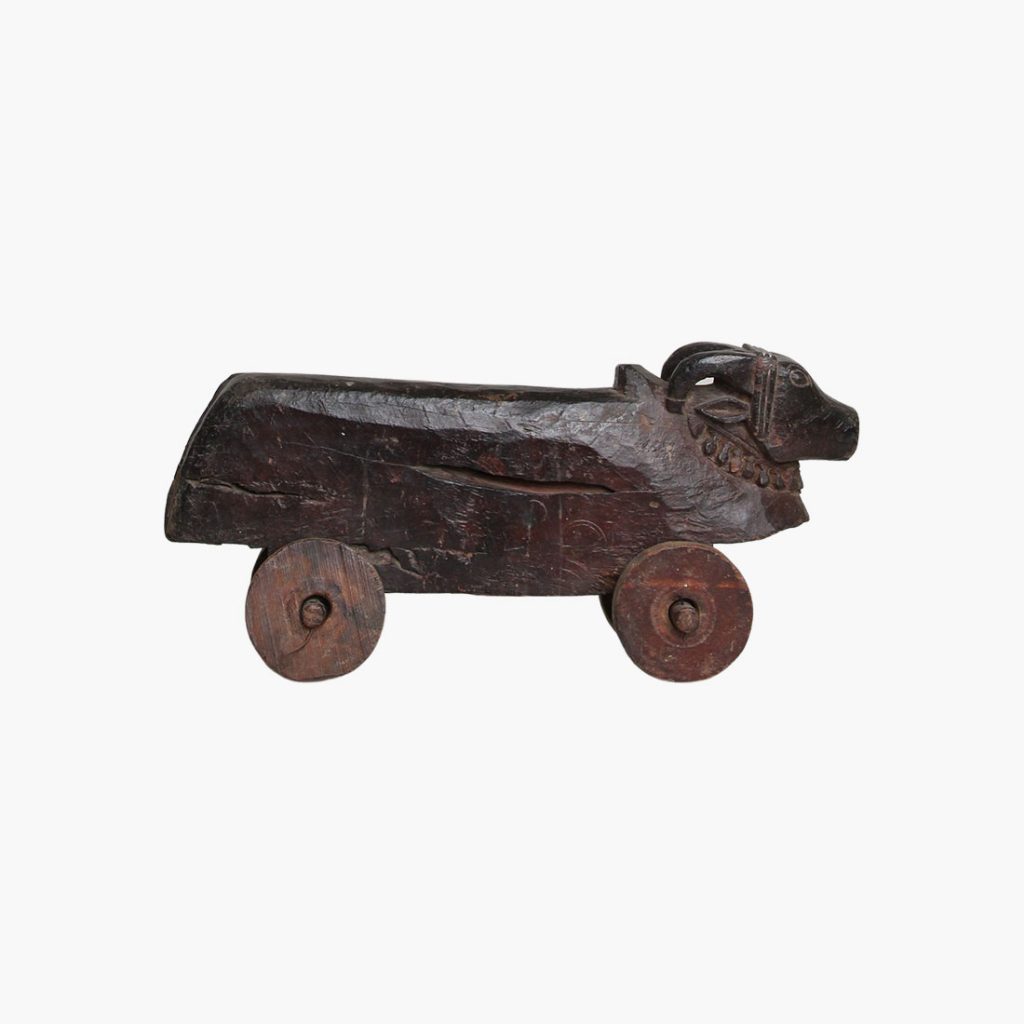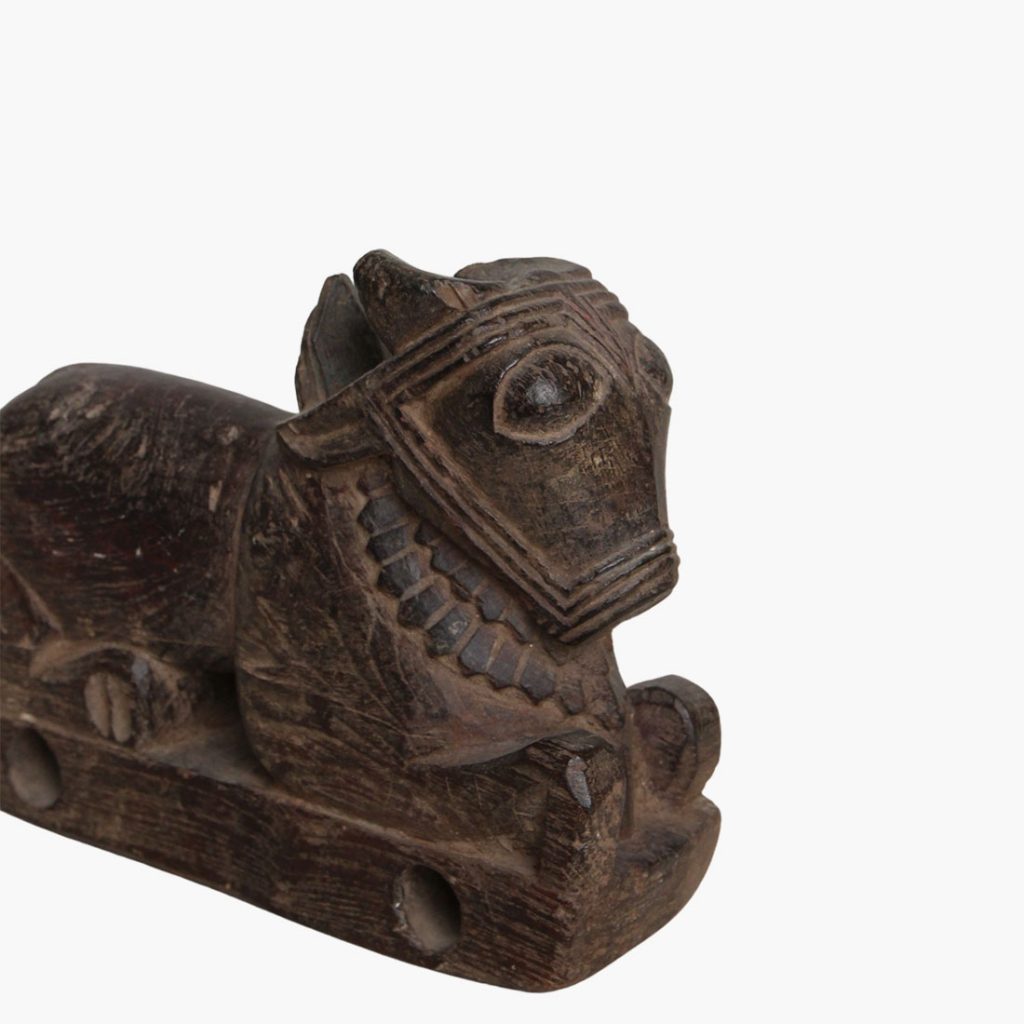
Our buyers travel the world to find furniture and accessories to enhance your home. With each journey, they bring back items with an interesting background story.
In this month’s ‘Story Of..’, we want to tell you more about our authentic Nandis. Read more below.
Nandi is the sacred bull, gatekeeper, and vehicle (Vahana) of the Hindu god Shiva. Sculptures of Nandi are a common sight at Hindu temples dedicated to its master. In fact, Nandi is partly responsible for the Hindu reverence for living bulls even today, especially in the state of Uttar Pradesh.
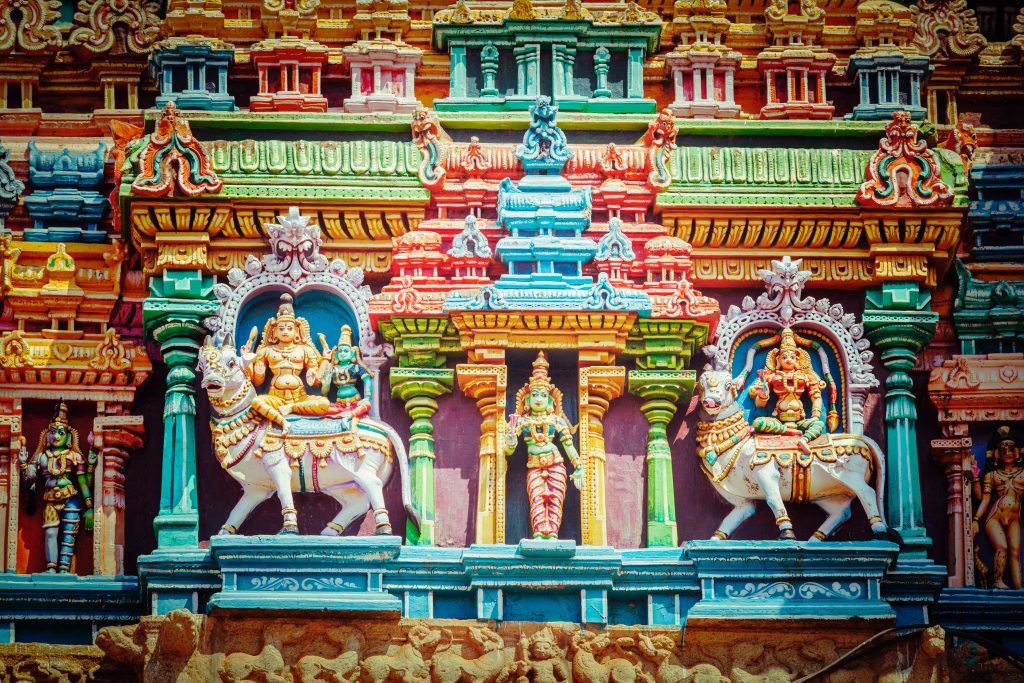
Nandi’s role
According to the Vayu Purana, Nandi is the son of Kasyapa and Surabhi. In the Saura Purana Nandi, his role as Shiva’s gatekeeper is described as, ‘adorned with all ornaments, glowing like a thousand suns, holding a trident in his hand, three-eyed, adorned with a sliver of the moon, a thunderbolt in his hand, four-armed, like a second Sankara [Shiva]’.
Besides being Shiva’s vehicle, Nandi is also the chief of the god’s team of ganas or attendants, and consequently, he often carries a golden staff of office. His other duties include being the guardian of all quadrupeds and the provider of music as Shiva dances the tandava, the cosmic dance of creation.
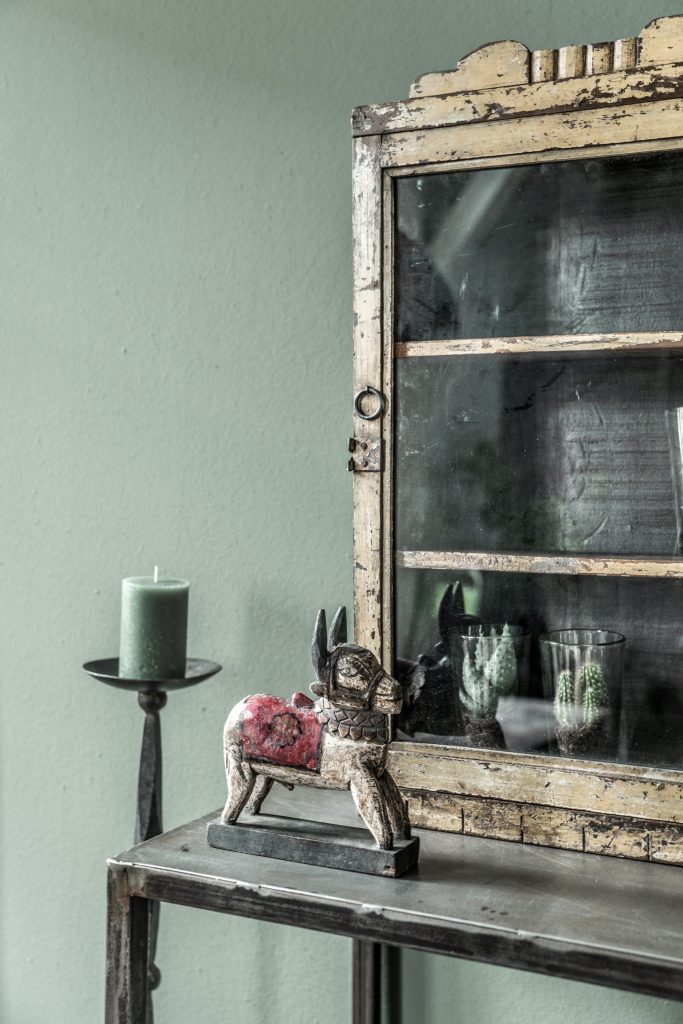
History: Nandi Battles Indra
In the Brhaddharma Purana, it is Nandi who, at the command of Shiva, kills the elephant demon Airavata, who belongs to the god Indra. Nandi had been given the task of finding a replacement head for the god Ganesha who had lost him in an unfortunate accident involving his father Shiva. Naturally, Indra was not best pleased with this plan and so hurled various projectiles at Nandi to stop him. However, Nandi easily swept aside Indra’s mace, trident, and thunderbolt. Indra next gathered his huge army together and subjected Nandi to a fearsome rain of arrows. Nandi, whose body is as hard as a rock, was untroubled by this salvo and, laughing nonchalantly, proceeded to lop off Airavata’s head anyway. The head was soon added to Ganesha’s body, and Shiva was delighted with Nandi’s handiwork.
Representation in art
A statue of Nandi is present as a bull sitting on a plinth in front of most Hindu temples dedicated to Shiva, especially Dravida (Southern) temples. He sits in a dedicated columned pavilion known as a nandi mandapa and is positioned so that he gazes in adoration at Shiva’s linga within the main temple. The bull is often dressed by worshippers with bells, clappers, and a necklace of flowers.
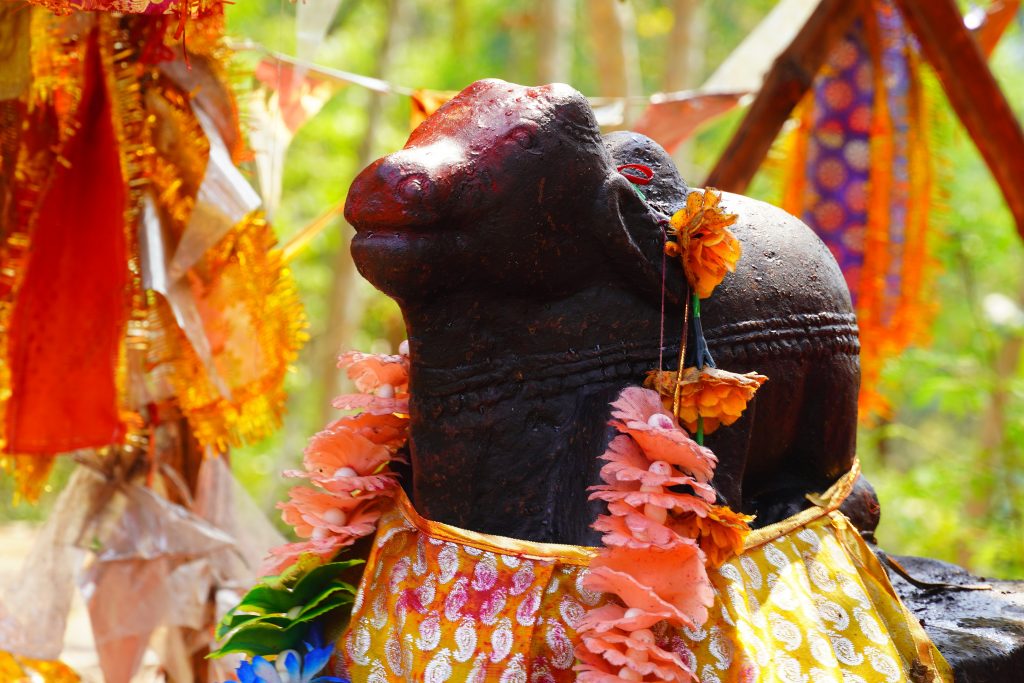
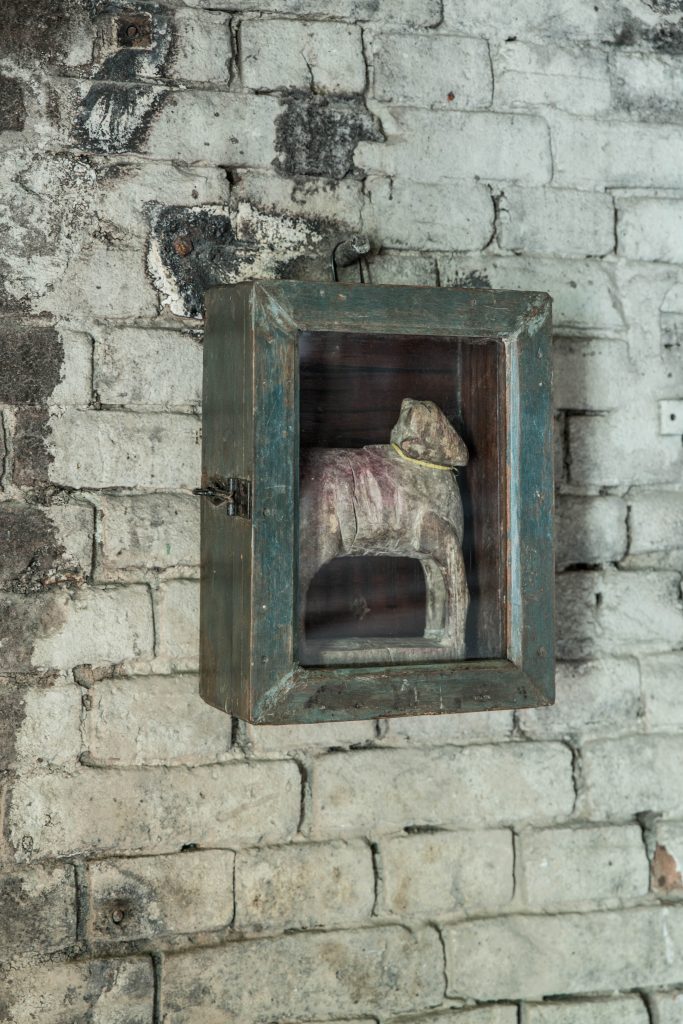
Nandi in family life
This bull/cow also protects your house and gives joy & pleasure.
His white color symbolizes purity and justice.
Inside the house & village shrines, they are worshipped frequently with holy water, oil, milk, and ritual powder.
Over time this gives the Nandi a nice patina.
Many children use them also as toys, they make wheels under the cow and run around all over the street.
Hence the result is that many cows are missing ears and their tails.
Women often go to the temple bringing floral offerings, touching the stone statue of the Nandi, and praying for good luck, more money and even getting pregnant…
How to buy a good quality Nandi
- The original position of a Nandi is reclined, these are the real old ones. Approximately 80-120 years old. Often found in teakwood brown color or faded blue & green colors.
- The next quality is where the Nandi is put on a base. Some with or without wheels. Age of these are around 50-80 years. Often carved from hardwood in blue/red/green/pink or teak color. Also, they can be overpainted so the old paint comes out.
- Then comes the 20-50-year-old Nandi’s. Less nice carvings and details, but depending on the owner there is some quality. Now this is a very mixed lot.
- Anything less than 20 years old and even made yesterday is pretty much the same. Only very light easily carved wood is used. There is no real patina. White is the most used color, often adorned with fake decorations.
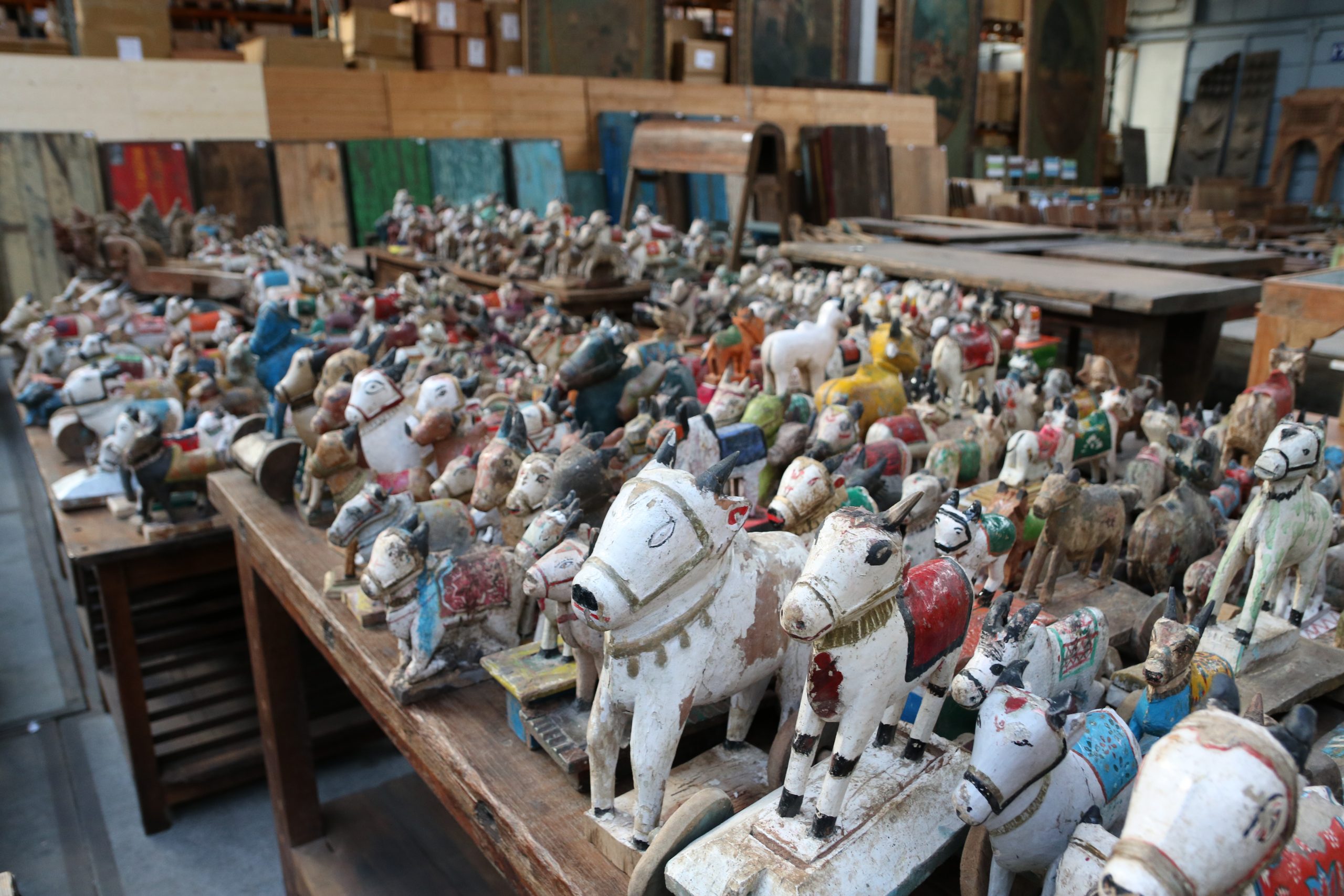
Our buying
The last category, although they are offered to me, I would not buy these. Unless a catalog buyer wants them and it is described as new. These are the Nandis without a soul.
The oldest & most original and reclined version is often smaller in height. Somehow these are less attractive and less wanted as well. The real pleasure goes into the 50-80-year-old Nandi’s. Hard to find and nowadays collection items.
Where I was able to buy them 15-20 years ago in quantity, it is now collecting them one by one. Prices have gone up and up, but I keep on buying them. We regard them as a nice collection object, like a painting or statue. In any case, a good Nandi does give you pleasure when you look at him.
50-80 years old Nandi’s
We always have several Nandi’s up for sale. They are kept in our upstairs gallery. So when you do visit us in Amsterdam, keep them in your mind. Take one home for your collection or give it to a special friend!
